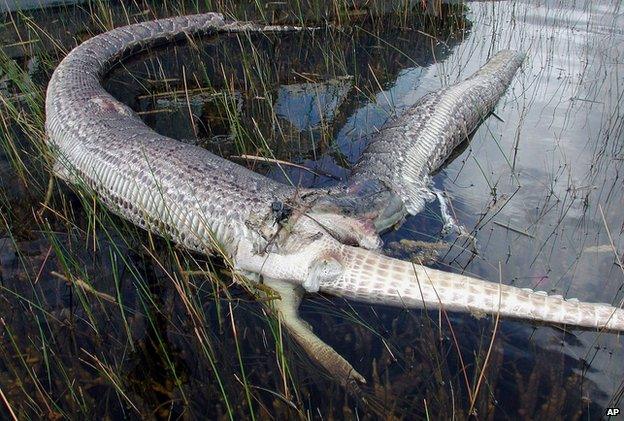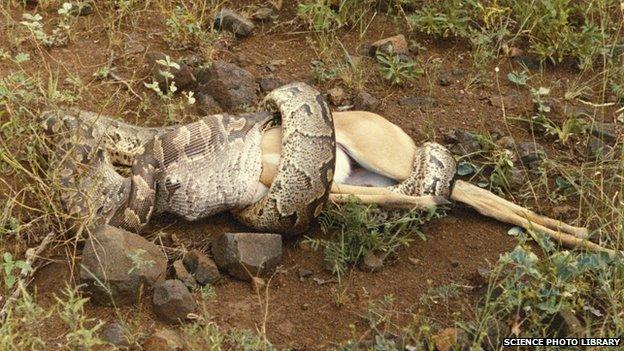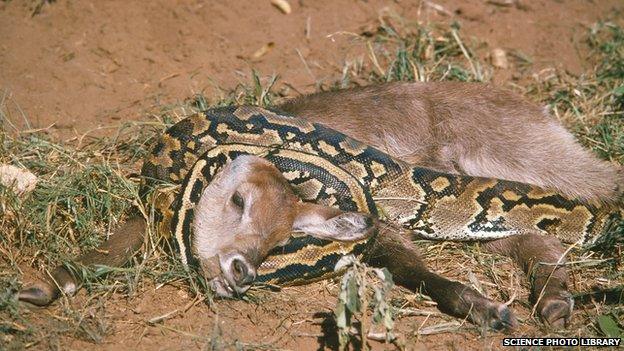Who, What, Why: How does a snake eat a crocodile?
- Published

Nine years ago in Florida, a python burst trying to swallow an alligator
Onlookers at a lake in Queensland watched an olive python kill and swallow a 1m (3.2ft) crocodile. What happens next, asks Tom Geoghegan.
Pythons in this area usually eat smaller animals - rats are their favourite. Crocodiles represent a more unusual and riskier choice but with greater returns - it will be two months before the snake requires another meal.
"They can swallow a crocodile, no problem, but it can defend itself, so it's a more risky choice than a rat," says snake expert Bryan Fry, a professor at the University of Queensland. There are other risks too, he says. Witnesses said it took this snake about five hours to swallow the crocodile. During that time the snake is vulnerable to attack from a dingo.
As a python wraps itself around its prey, it's not squeezing the air out of it but waiting for it to exhale and then tightening the coil, gradually restricting its breath.
.jpg)
No such problems in the latest case in Queensland
Pythons can sense the heartbeat so they know when their prey stops breathing and they can conserve their energy for the next stage - the swallow. Swallowing live animals is risky. In 2005, a large Burmese python in Florida tried to swallow an alligator but then exploded spectacularly, external, perhaps simply because it was too big or it cut an artery.
Once the animal is in a python's stomach, its digestive system - which shuts down in between meals - suddenly kicks into hyperdrive. This involves a sharp increase in their metabolic rate, their organs enlarging by three or four times their normal size and the release of enzymes to break down the food.
The python in Queensland will bloat further over the next few days as it digests, says Fry. In two weeks it will start to slim down and in three weeks it will defecate a calcium ball, having absorbed the fat and protein, but not the excess minerals.
Small ducklings and young wallabies are a more common meal than a crocodile. There are rare pictures of small cows and deer as prey but humans, says the professor, are usually off limits because their shoulders are too wide.

An African rock python swallows a young impala

In Kenya, this waterbuck was attacked by a python
Follow @BBCNewsMagazine, external on Twitter and on Facebook, external